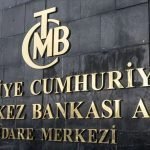Bitcoin (BTC) retreated to under $23,000, having printed a six-week high of $24,265 on Wednesday. Despite the pullback, prices were up 14% for the month, according to CoinDesk data.
Meanwhile, in fiat currencies the euro (EUR), the common currency of 17 of the 21 European Union nations, held on to its recent gains against the U.S. dollar (USD) ahead of the European Central Bank’s (ECB) expected first interest rate hike in 11 years.
The EUR/USD pair rose to a two-week high of 1.0273 during the early Asian hours and traded flat around 1.0180 at press time. The so-called shared currency slipped below parity with the dollar early this month, hitting a two-decade low.
The ECB rate decision due on Thursday at 12:15 GMT will be followed by the central bank’s President Christine Lagarde’s press conference at 12:45 GMT. The consensus is for the bank to raise the benchmark interest rates by 25 basis points to -0.25% from the current record low of -0.5%. The ECB, Bank of Japan (BOJ), and Swiss National Bank (SNB) have held rates below zero for years.
“The European Central Bank will raise policy rates by 25bp on 21 July and effectively commit to a hike of at least 50 bps [basis points] in September, we expect, sticking to plans agreed at the June meeting,” strategists at BNP Paribas noted in the ECB preview note published last week.
Potential reversal of NIRP ahead
The ECB rate decisions have not significantly impacted cryptocurrencies in the past. However, the impending decision is noteworthy because the central bank is not only expected to raise rates for the first since 2011, it is also likely to signal more rate hikes in the pipeline. That would imply a reversal of its negative interest rate policy (NIRP) – a policy setting whereby borrowers receive interest rather than paying the cost of borrowing money to lenders. The ECB, Bank of Japan and Swiss National Bank have held rates below zero for years to boost growth.
Critics of the fiat monetary system and central bank-medium of exchange have long cited negative rates as evidence of traditional finance nearing complete collapse and the need to explore alternatives like cryptocurrencies. So, one might think the reversal of the so-called NIRP would be bearish for bitcoin and cryptocurrencies. But that’s not the case, according to one expert.
“I think that the underlying case for crypto assets becomes more apparent in times of significant economic and currency turmoil – an alternative system beholden to sentiment but not to any economic fundamentals, unlike equities or bonds,” Noelle Acheson, head of market insights at Genesis Global, said.
Genesis is owned by CoinDesk’s parent company, Digital Currency Group.
“And investors have to do something, staying in cash in times of rising rates and volatile currencies is not a resilient strategy,” Acheson added.
Rate Hike may inject temporary volatility
However, the ECB’s lift-off and potential plans to ditch NIRP may inject volatility into risk assets, including cryptocurrencies.
“I don’t think it’s priced in because traditional markets still seem to be in some denial about the macro consequences of this – in other words, the economic and earnings pain that, in my opinion, lies ahead is not yet reflected in current equity or bond prices,” Acheson told CoinDesk, adding that the pace of the rate hike cycle will be critical.
“More relevant will be any hint as to what the ECB will do next – continued 50 bps hikes could help if it weren’t for the danger they pose to not only the EU economy but also the state of the union itself, especially given Draghi’s likely resignation today,” Acheson noted.
Some observers expect a bigger hike, in which case, the risk assets could come under pressure.
“I believe that the ECB will deliver a 50 bps lift-off this month, in the wake of rampant inflation, resumption of the Russian gas supply and the fact that the ECB is way behind the curve,” FXStreet’s Senior Analyst Dhawni Mehta said in the preview published on Wednesday. “It’s also worth noting that front-loading rates now may allow the central bank some room to pause or go slower on rate hikes when a recession hits.”
According to FXStreet, interest rate traders are pricing a 40% probability of a half-point rate hike on Thursday while factoring 97 basis points of tightening by September.
Anti-fragmentation tool to save the day?
Perhaps, battered risk assets may show resilience to rate hikes if the central bank announces an anti-fragmentation tool to ensure the impact of an increase in borrowing costs is felt the same way across the common currency area. Recently, bond markets in highly-indebted EU nations like Italy saw heightened volatility relative to German bonds on speculation of an ECB rate hike. Such divergences could lead to fragmentation and pose a risk to the common currency area and the EU.
Under the tool, the policymakers may commit to purchasing assets, perhaps bonds of indebted nations, to limit divergences in bond markets of the bloc’s strongest and weakest countries. Bond purchases, also known as quantitative easing, inject liquidity into the financial system. The Fed, ECB and other central banks launched QE programs following the crash of March 2020, sparking spark risk-taking across all corners of the financial market.
“We maintain our long-standing central case that the ECB’s anti-fragmentation tool (Working name: Transmission Protection Mechanism – TMP) will arrive, probably next week,” BNP Paribas said in a note published last week.
“We would expect the initial focus of the tool to be on the government bond market – the first stage of transmission, of which all other assets, are priced, and hence a necessary condition for preventing fragmentation,” BNP Paribas added.







